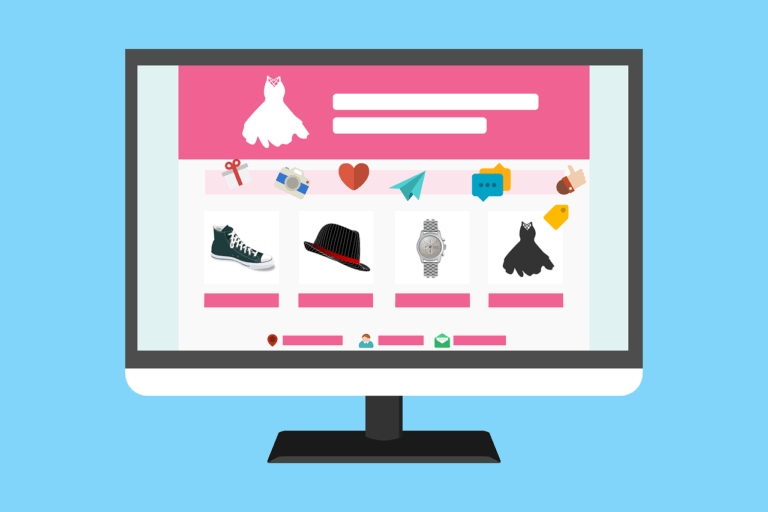In the fiercely competitive world of e-commerce, where customers are bombarded with choices and have fleeting attention spans, failing to personalise the shopping experience is a recipe for lost sales and forgotten brands. This is where personalised product recommendations come into play. By leveraging data, artificial intelligence, and a touch of human understanding, you can curate product suggestions that resonate with your customers’ individual needs and preferences. This not only increases the likelihood of a purchase but also fosters customer loyalty and creates a more satisfying shopping journey. So, ditch the generic approach and dive into the world of personalised product recommendations – it’s the key to unlocking a new level of success for your e-commerce business.
In the cutthroat world of e-commerce, where customer attention spans are shorter than ever, personalisation is no longer a “nice-to-have” – it’s a necessity. You, as an e-commerce leader, understand the power of a personalised experience: increased sales, loyal customers, and a smoother buying journey. But are you truly unlocking the potential of personalised product recommendations?
Let’s face it, the classic “Customers Who Bought This Also Bought” section has become a bit of a yawn-fest. We’ve all seen it a thousand times. If you want to stand out and make personalised recommendations that resonate with your customers, it’s time to ditch the generic and embrace a more strategic approach.
Beyond the Basics: Crafting Personalised Recommendations that Click
So, how do you curate product suggestions that pique your customers’ interest and drive them to click that “add to basket” button? Here are some battle-tested tactics to help you refine your personalisation game:
Unleash the Power of AI
Artificial intelligence (AI) has become a game-changer in e-commerce personalisation. Gone are the days of relying solely on basic purchase history data. AI-powered recommendation engines leverage machine learning algorithms to analyse a wealth of customer data, including browsing behaviour, past purchases, demographics, and even wishlists. This allows you to generate highly targeted recommendations that cater to individual customer preferences and needs.
Think of it like having a virtual shopping assistant for each visitor on your site. AI can identify patterns and connections that might escape the human eye, recommending products that complement past purchases or anticipate future needs. For instance, a customer who has recently purchased a new laptop might be interested in a carrying case or a wireless mouse. AI can pick up on these subtle cues and deliver relevant suggestions that enhance the customer experience.
Here’s a real-world example:
Net-a-Porter, the luxury fashion retailer, uses AI to personalise product recommendations across their website and email marketing. By analysing a customer’s past purchases, browsing behaviour, and even social media activity, they can curate a selection of clothing and accessories that align perfectly with the customer’s style preferences. This not only increases the likelihood of a purchase but also fosters a sense of brand loyalty – the customer feels like Net-a-Porter truly “gets” them.
Get Creative with Your Personalised Product Recommendation Placements
While the “Customers Who Bought This Also Bought” section has its place, it’s time to expand your horizons. Think beyond product pages and consider incorporating personalised recommendations throughout the customer journey. Here are some strategic placement ideas:
- Homepage: Showcase personalised recommendations based on a customer’s browsing history or previous interactions with your brand. This is a prime opportunity to re-engage visitors who may have abandoned their carts or remind them of products they expressed interest in.
- Category Pages: As customers browse specific categories, tailor your recommendations to their refined search. For example, if a customer is looking at athletic shoes, suggest complementary items like socks, workout apparel, or sports nutrition products.
- Checkout Page: The checkout page can be a goldmine for strategic recommendations. While a customer is finalising their purchase, consider suggesting add-on items that complement their selections. This could be a phone case for a new phone purchase or a travel mug for someone buying a coffee machine.
By strategically placing personalised recommendations throughout your website, you create more touchpoints and opportunities for customers to discover new products they’ll love.
Consider Customer Context: Recommendations with Real-World Relevance
Personalisation goes beyond simply looking at past purchase behaviour. It’s about understanding your customer’s current context and tailoring recommendations accordingly. Here are some ways to add a touch of context to your suggestions:
- Time of Day: Customer behaviour can vary depending on the time of day. For example, morning shoppers might be browsing for work attire or coffee makers, while evening visitors might be interested in leisurewear or entertainment products. Use this knowledge to tailor your recommendations accordingly.
- Device: Mobile shoppers are typically more likely to make impulse purchases. Consider recommending smaller, more affordable items or products that are well-suited for on-the-go convenience.
- Location: If your e-commerce store has a physical presence, you can leverage location data to suggest products relevant to the customer’s geographical area. For example, if a customer is browsing your site from a coastal location, you might recommend beach towels or swimwear.
By factoring in these contextual cues, you can make your personalised recommendations feel more genuine and relevant, ultimately leading to a more satisfying shopping experience.
Leverage Social Proof: The Power of Customer Influence
People are naturally drawn to products endorsed by others, especially those they perceive as similar to themselves. This is where social proof comes in. By incorporating elements of social proof into your personalised recommendations, you can tap into this powerful motivator and nudge customers towards a purchase. Here’s how:
- Customer Reviews & Ratings: Showcase positive reviews and ratings alongside your personalised recommendations. Seeing other customers rave about a product can significantly increase its perceived value and trustworthiness.
- User-Generated Content (UGC): UGC, such as customer photos or videos featuring recommended products, can be a highly effective way to build trust and social proof. People are more likely to connect with real-life experiences than with generic marketing messages.
- Influencer Marketing: Partnering with relevant micro-influencers in your niche can be a strategic way to leverage social proof. By having influencers showcase your products in a genuine way, you can tap into their established audience and build trust with potential customers.
Here’s an example of social proof in action:
Amazon is a master of social proof. Their product pages often display a prominent section for customer reviews and ratings. They also showcase user-generated photos and highlight products frequently purchased together. This blend of social proof elements provides valuable insights and builds trust with potential buyers, ultimately influencing their purchasing decisions.
Don’t Forget the Human Touch: Personalised Recommendations with Soul
While AI and data analysis play a crucial role in personalisation, it’s important not to lose sight of the human element. A sprinkle of human touch can go a long way in building a connection with your customers and making them feel valued. Here are some ways to add a personal touch to your recommendations:
- Greeting by Name: Personalise email marketing communications and website greetings by using the customer’s name. This simple touch instantly creates a more welcoming and personal experience.
- Curated Product Collections: Go beyond generic recommendations and curate product collections based on customer preferences or special occasions. This allows you to showcase your brand’s personality and expertise, while still delivering relevant suggestions.
- “Handwritten” Notes: Consider adding a personalised note to your email marketing communications or order confirmations. This could be a brief message thanking the customer for their purchase and offering additional product recommendations based on their selections.
A word of caution: When implementing any personalisation tactics, it’s crucial to strike a balance between relevance and creepiness. Customers appreciate personalised recommendations, but they don’t want to feel like they’re being stalked! Ensure your data collection practices are transparent and always prioritise user privacy.
Conclusion: Personalised Recommendations – The Key to E-commerce Success
By implementing these strategies, you can move beyond the basic “Customers Who Bought This Also Bought” approach and craft personalised product recommendations that truly resonate with your customers. Remember, personalisation is an ongoing journey, not a one-time fix. Continuously monitor your data, experiment with different tactics, and refine your approach to create a personalised shopping experience that drives sales, fosters loyalty, and sets you apart from the competition.
Ready to take your personalisation game to the next level? Here are some additional resources to get you started:
- McKinsey & Company: Personalization: The future of customer engagement https://www.mckinsey.com/featured-insights/mckinsey-explainers/what-is-personalization (This article explores the various facets of personalisation and its impact on customer engagement.)
- BigCommerce: The Ultimate Guide to Personalized Product Recommendations https://support.bigcommerce.com/s/question/0D51B00004KCDz1SAH/offering-customizable-products?language=en_US (This comprehensive guide dives deep into the world of personalised product recommendations, offering practical tips and implementation strategies.)
- Forbes: Why AI-Powered Personalized Recommendations Will Win in E-commerce https://www.forbes.com/sites/forbestechcouncil/2024/01/26/navigating-the-ai-era-the-rise-of-personalized-real-time-e-commerce-experiences/ (This article highlights the importance of AI in e-commerce personalisation and explores the benefits it offers to businesses.)
By leveraging the power of personalisation, you can unlock a new level of customer engagement and success for your e-commerce business. So, start personalising today and watch your sales soar!
FAQs About Personalised Product Recommendations
What influences the effectiveness of personalised recommendations?
Data Quality: The quality of the data you use to fuel your recommendations is paramount. Inaccurate or incomplete data will lead to irrelevant suggestions that turn customers off.
Recommendation Engine Capabilities: The sophistication of your recommendation engine plays a crucial role. Advanced AI-powered engines can analyze a wider range of data points and deliver more nuanced and relevant recommendations.
Customer Context: Taking into account factors like time of day, device used, and location can significantly enhance the effectiveness of your recommendations. For example, suggesting winter coats to a customer browsing your site in July wouldn’t be very effective!
Why are personalised products considered superior to non-personalised ones?
Increased Relevance: Customers are more likely to be interested in recommendations that align with their past purchases, browsing behaviour, and preferences. This leads to a more engaging shopping experience.
Enhanced Conversions: When customers see products they’re genuinely interested in, they’re more likely to add them to their cart and complete the purchase.
Boosted Customer Loyalty: Personalisation demonstrates that you care about your customers’ individual needs. This fosters a sense of connection and loyalty, encouraging repeat business.
Can personalised recommendations feel intrusive to customers?
Transparency: Be upfront about your data collection practices and how you use customer information.
Control: Allow customers to manage their privacy settings and opt out of receiving personalised recommendations if they desire.
Relevance: Focus on delivering highly relevant recommendations that provide genuine value to the customer.


